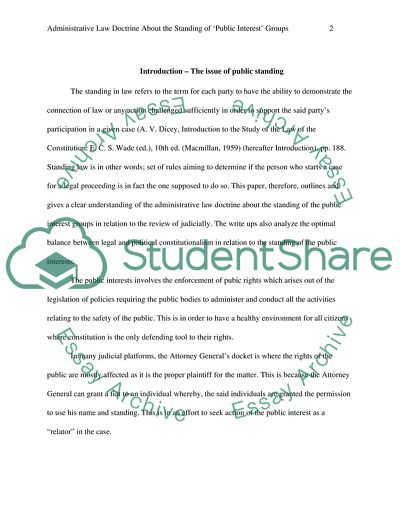Cite this document
(Administrative Law Doctrine Essay Example | Topics and Well Written Essays - 1750 words, n.d.)
Administrative Law Doctrine Essay Example | Topics and Well Written Essays - 1750 words. https://studentshare.org/law/1796795-administrative-law-doctrine-about-the-standing-in-relation-to-judicial-review-of-public-interest-groups
Administrative Law Doctrine Essay Example | Topics and Well Written Essays - 1750 words. https://studentshare.org/law/1796795-administrative-law-doctrine-about-the-standing-in-relation-to-judicial-review-of-public-interest-groups
(Administrative Law Doctrine Essay Example | Topics and Well Written Essays - 1750 Words)
Administrative Law Doctrine Essay Example | Topics and Well Written Essays - 1750 Words. https://studentshare.org/law/1796795-administrative-law-doctrine-about-the-standing-in-relation-to-judicial-review-of-public-interest-groups.
Administrative Law Doctrine Essay Example | Topics and Well Written Essays - 1750 Words. https://studentshare.org/law/1796795-administrative-law-doctrine-about-the-standing-in-relation-to-judicial-review-of-public-interest-groups.
“Administrative Law Doctrine Essay Example | Topics and Well Written Essays - 1750 Words”. https://studentshare.org/law/1796795-administrative-law-doctrine-about-the-standing-in-relation-to-judicial-review-of-public-interest-groups.


